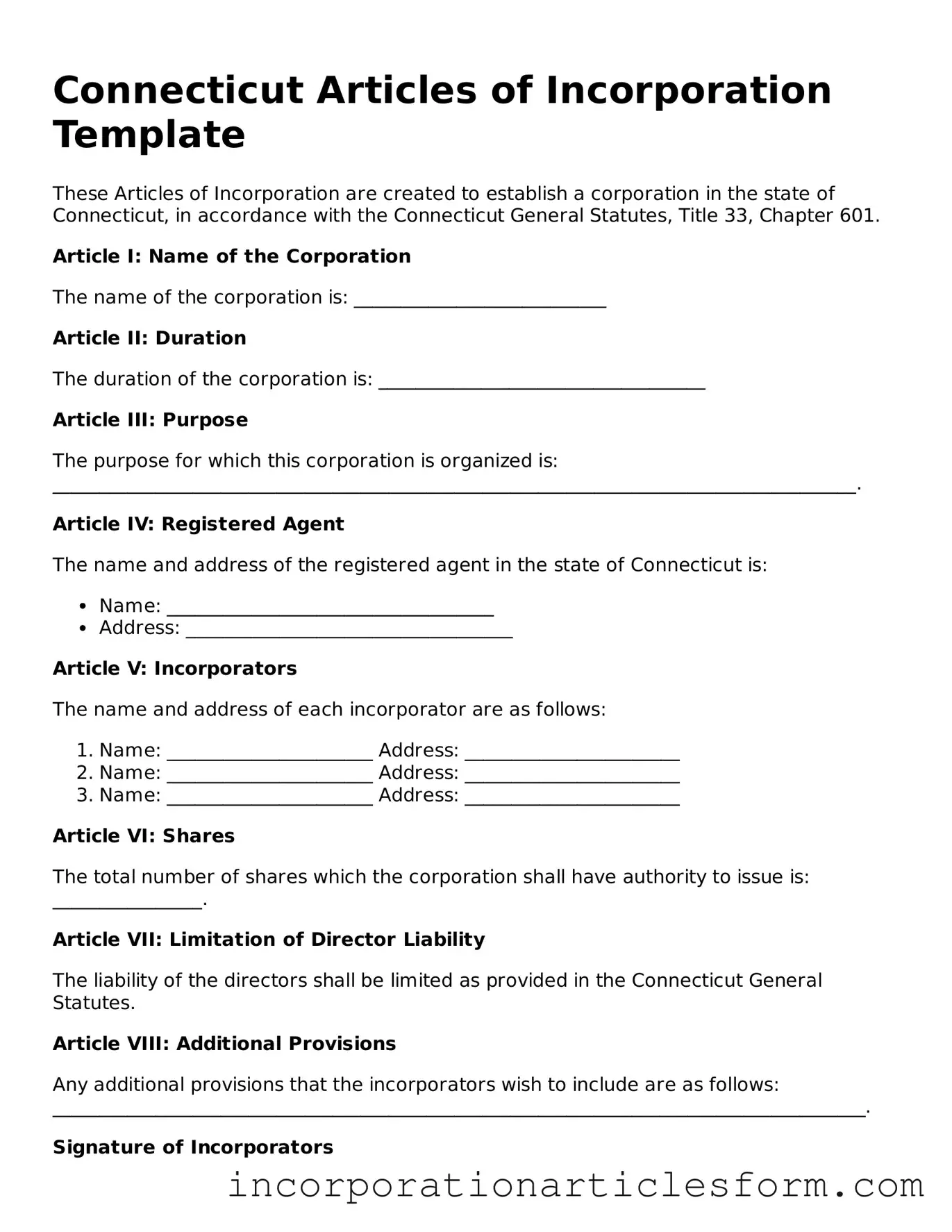The Articles of Incorporation in Connecticut serve a similar purpose to the Certificate of Incorporation, which is often used interchangeably in various jurisdictions. Both documents establish a corporation as a legal entity, outlining essential information such as the corporation's name, purpose, and the number of shares it is authorized to issue. The Certificate of Incorporation typically provides a more streamlined approach, but both documents ultimately fulfill the same function of creating a corporation under state law.
Another document akin to the Articles of Incorporation is the Bylaws. While the Articles of Incorporation lay the groundwork for the corporation's existence, the Bylaws govern its internal operations. Bylaws detail how the corporation will be managed, including the roles of officers and directors, meeting procedures, and voting rights. This distinction is crucial, as the Articles serve as the foundational charter, while Bylaws provide the operational blueprint.
The Limited Liability Company (LLC) Articles of Organization are also comparable to the Articles of Incorporation. Both documents are required to formally establish a business entity. However, the Articles of Organization are specific to LLCs, which provide owners with limited liability protection while allowing for more flexible management structures. This document includes the name of the LLC, its principal address, and the names of its members, paralleling the information required in Articles of Incorporation.
The Partnership Agreement is another related document, especially when considering business structures. While the Articles of Incorporation create a corporation, a Partnership Agreement governs the relationship between partners in a partnership. This agreement outlines each partner's contributions, responsibilities, and the distribution of profits and losses. Both documents aim to clarify the structure and operational guidelines of a business, albeit in different contexts.
Similar to the Articles of Incorporation is the Certificate of Good Standing, which is often required by banks and other entities to verify that a corporation is legally recognized and compliant with state regulations. While the Articles of Incorporation establish the corporation, the Certificate of Good Standing confirms that it is active and has fulfilled all necessary legal obligations, such as filing annual reports and paying taxes.
The Statement of Information is another document that shares similarities with the Articles of Incorporation. Required in some states, this document provides updated information about a corporation, including its address, officers, and business activities. While the Articles serve as the initial filing to create the corporation, the Statement of Information is often a periodic requirement to ensure that the state has current information about the entity.
The Operating Agreement, while specific to LLCs, bears similarities to the Articles of Incorporation. This document outlines the management structure and operational procedures of the LLC. Like the Articles, the Operating Agreement is essential for defining the rights and responsibilities of the owners, although it is tailored to the unique characteristics of an LLC rather than a corporation.
The Corporate Resolution is another document that aligns with the Articles of Incorporation in that it formalizes decisions made by the corporation's board of directors or shareholders. While the Articles establish the corporation's existence, Corporate Resolutions document specific actions taken by the corporation, such as approving contracts or authorizing bank accounts, thus ensuring that the corporation operates within its defined legal framework.
Finally, the Annual Report is a document that, while not required at the time of incorporation, is essential for maintaining a corporation’s good standing. This report provides updated information about the corporation's financial status, directors, and business activities. Like the Articles of Incorporation, the Annual Report serves to keep the state informed about the corporation, ensuring ongoing compliance with legal requirements.
